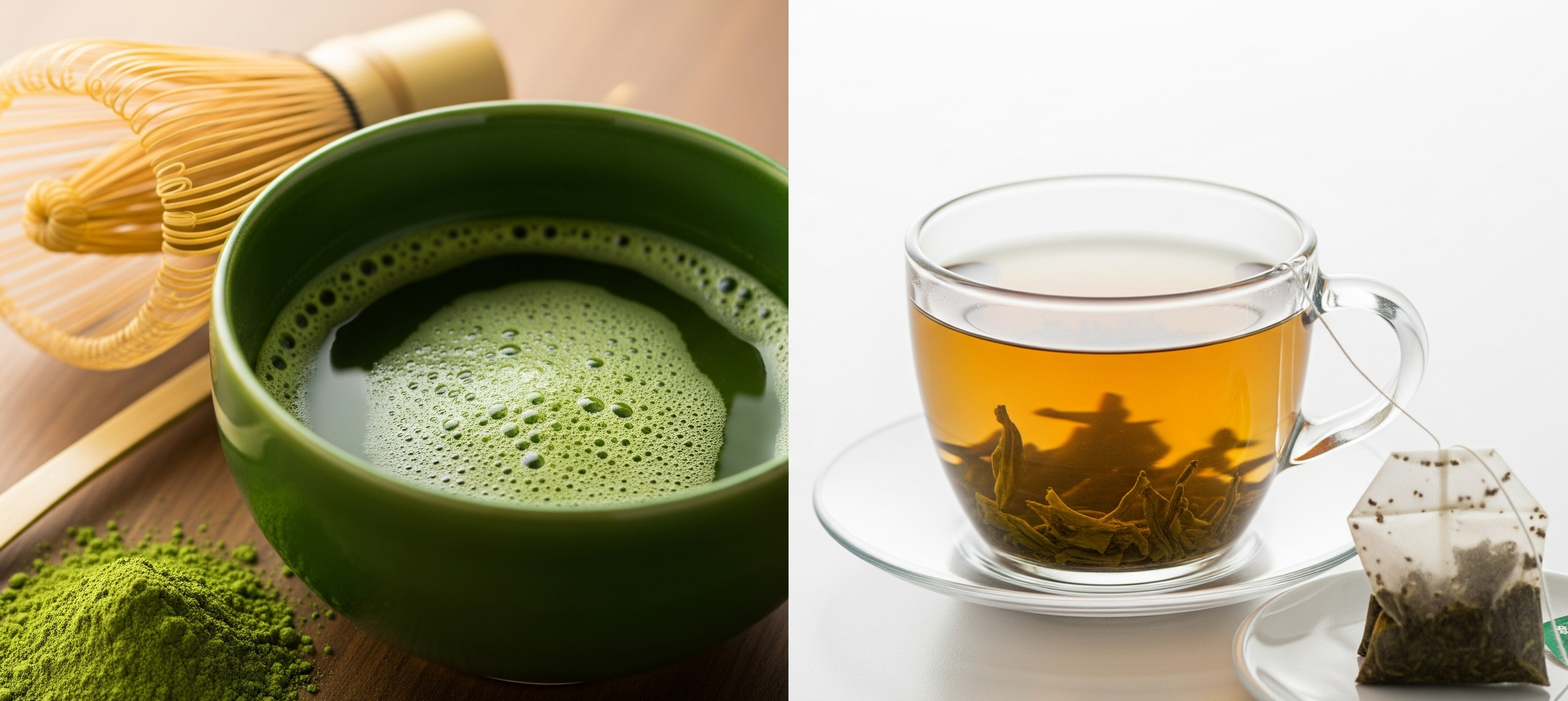Introduction: A Tale of Two Teas
Matcha and green tea often confuse people because both come from the same plant Camellia sinensis. Yet, the way they are grown, prepared, and enjoyed makes them very different.
We’re not playing around with dusty green tea bags here. We’re talking legit, organic matcha straight from Kagoshima, Japan. Everyday Matcha for lattes and recipes and Ceremonial Matcha for traditional whisked tea. By understanding the difference between matcha and green tea, you will also see why Bree Matcha is more than just a drink; it's an upgrade to your wellness routine..
What is Green Tea?
Green tea is one of the world’s most common teas. It is grown in full sunlight, harvested, and then quickly steamed or pan-fired to prevent oxidation.
-
Types of green tea: Sencha, Gyokuro, Hojicha, and more.
-
Preparation: Leaves are steeped in hot water, and then discarded. You only consume the water-soluble nutrients.
Green tea has a light, grassy taste and provides a gentle caffeine boost.
What is Matcha?
Matcha is a special Japanese green tea that is cultivated and prepared differently.
-
Shade-grown: 20–30 days before harvest, the plants are covered to block sunlight. This increases chlorophyll (bright green color) and L-Theanine (responsible for calm focus).
-
Stone-ground: The dried leaves are ground into a fine, smooth powder.
-
Preparation: Unlike green tea, where leaves are steeped and thrown away, with matcha you whisk the powder into water and drink the entire leaf.
This is why matcha delivers higher nutrients and energy compared to regular green tea.
Nutritional Comparison: Matcha vs Green Tea
| Factor | Green Tea (steeped) | Matcha (powdered leaf) |
| Antioxidants (EGCG) | Moderate | Up to 10x higher |
| Caffeine | Gentle boost | Steady energy, no crash |
| L-Theanine | Low | High (calm focus) |
| Nutrient intake | Partial | Full (whole leaf) |
Flavor Profile
-
Green Tea: Light, grassy, sometimes astringent depending on steeping.
-
Matcha: Rich, slightly sweet, smooth, with a signature umami taste when it’s high-quality ceremonial matcha.
This is why Bree Matcha offers two types:
-
Everyday Matcha: Great for lattes, smoothies, or baking.
-
Ceremonial Matcha: Perfect for pure, traditional tea moments.
Health Benefits
Benefits of Green Tea
-
Antioxidant support
-
Mild energy boost
-
Refreshing and hydrating
Benefits of Matcha
-
10x more antioxidants than green tea
-
Energy that lasts 4–6 hours without jitters
-
Calm focus from L-Theanine
-
Supports metabolism and weight balance
When comparing the benefits of matcha vs green tea, matcha clearly provides more concentrated results.
Popularity and Trends
Green tea has always been popular, but matcha green tea is leading global wellness trends. Gen Z and millennials love it for its vibrant energy, adaptability in recipes, and cultural connection to mindful living.
Why Bree Matcha?
Not all matcha is created equal. Many options in the market are low quality, dull in color, or even mixed with additives.
Bree Matcha stands out because:
-
It is shade-grown and stone-ground in Kagoshima, Japan
-
Handpicked for maximum antioxidants and authentic taste
-
Available in two grades Everyday Matcha and Ceremonial Matcha
-
Comes with thoughtfully designed matcha accessories for a complete experience
Choosing Bree Matcha means choosing purity, balance, and energy you can trust.
Conclusion: Choosing the Powerhouse
Both teas have their benefits, but the difference between matcha and green tea comes down to how much nutrition you want in your cup.
Green tea is refreshing and light, but matcha offers a deeper level of energy, focus, and antioxidants because you consume the whole leaf.
✨ Ready to upgrade? Experience the wellness ritual with Bree Matcha's: Everyday Matcha and Ceremonial Matcha. Green tea is good, but matcha is better and Bree Matcha brings you the best.














Share:
Why Matcha over Coffee
Best Ways To Drink Matcha